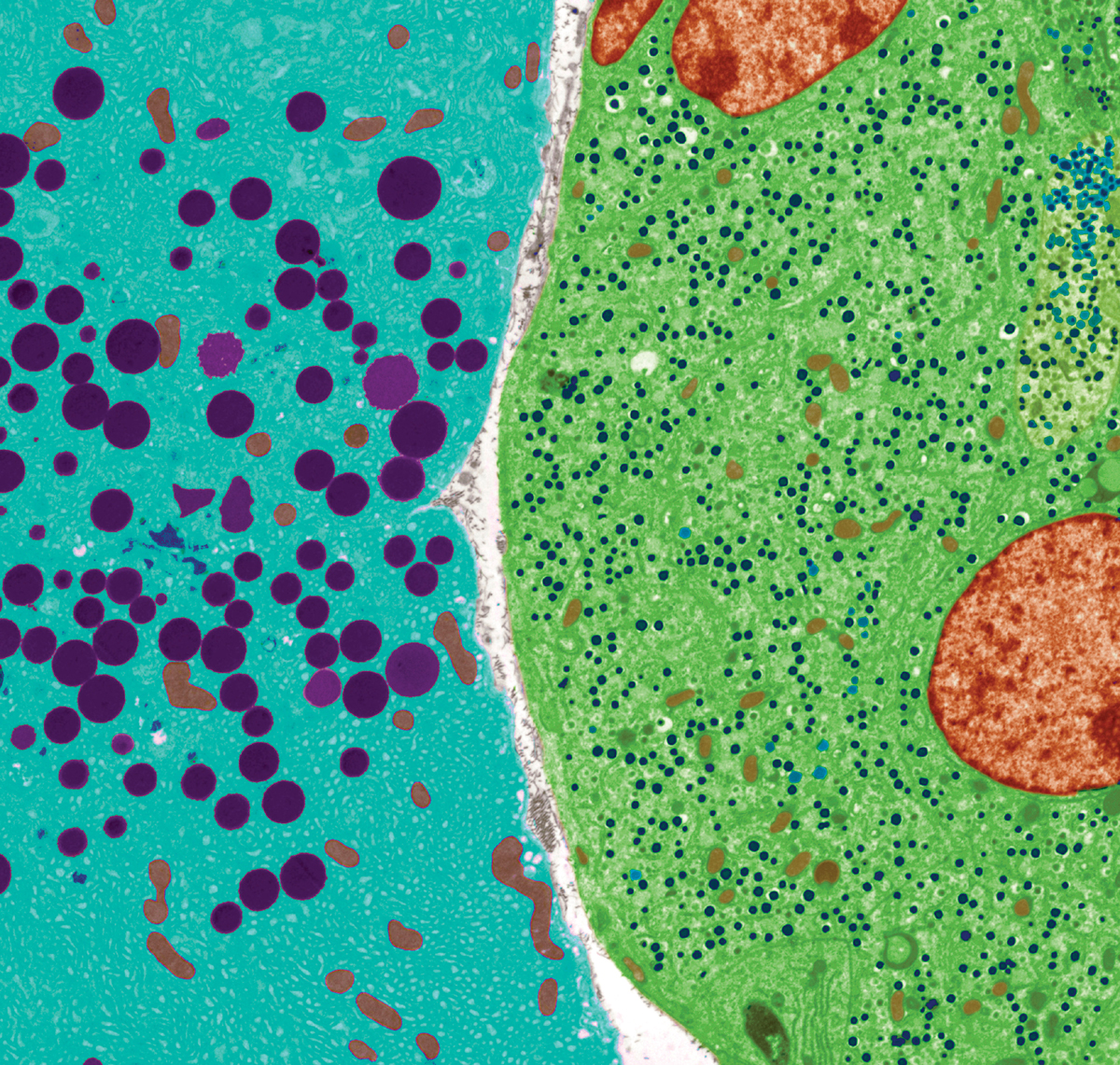CHAPTER 9 INTRODUCTION
CORE CONCEPTS
9.1 Cells communicate primarily by sending and receiving chemical signals.
9.2 Cell signaling can be classified according to the distance between the signaling and responding cells.
9.3 Signaling molecules bind to and activate specific cell-surface and intra-cellular receptors.
9.4 Signals are transmitted across the plasma membrane, are often amplified in the cytosol leading to a cellular response, and are eventually terminated.

Up to this point, we have considered how life works by looking mainly at what happens inside individual cells. We have seen how a cell uses the information stored in genes to synthesize the proteins necessary to carry out their functions. We have also seen how the plasma membrane actively keeps the environment inside the cell different from that outside it. Finally, we have explored how a cell harvests and uses energy from the environment. Most cells, however, do not exist in isolation. Instead, they exist in sometimes simple, but more often highly complex, communities of cells.
Successful communities have several features in common. First, individuals within a community communicate with one another. Cells respond to information provided by neighboring cells or to information provided by the surrounding environment. Second, individuals or groups of individuals within a community have particular skills that enable them to perform specific tasks essential to the well-being of the community. Cells in multicellular organisms have specialized functions: Muscle cells are specialized for contraction, red blood cells for transporting oxygen, and skin cells for establishing a physical barrier. Third, members of a community stick together—literally, in the case of cells. Most cells in multicellular organisms are physically attached to other cells or to other materials in their surroundings. The physical associations among some cells are very strong. In other instances, the connections between cells are transient and far less elaborate.
In the next three chapters, we consider communities of cells. In Chapter 9, we look at how cells communicate with one another. In Chapter 10, we consider cell shape and structure, which are both important for the ability of cells to perform their specific tasks, and we examine how cells physically interact with one another. Finally, in Chapter 11, we examine the means by which new members are added to cellular communities through cell division.